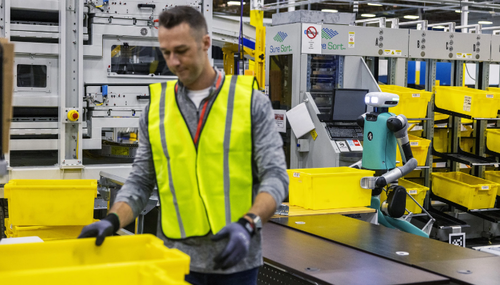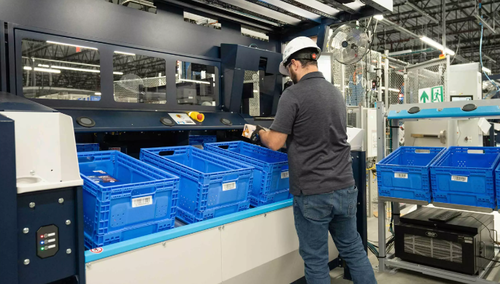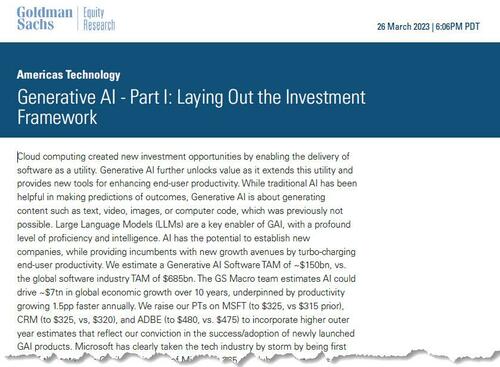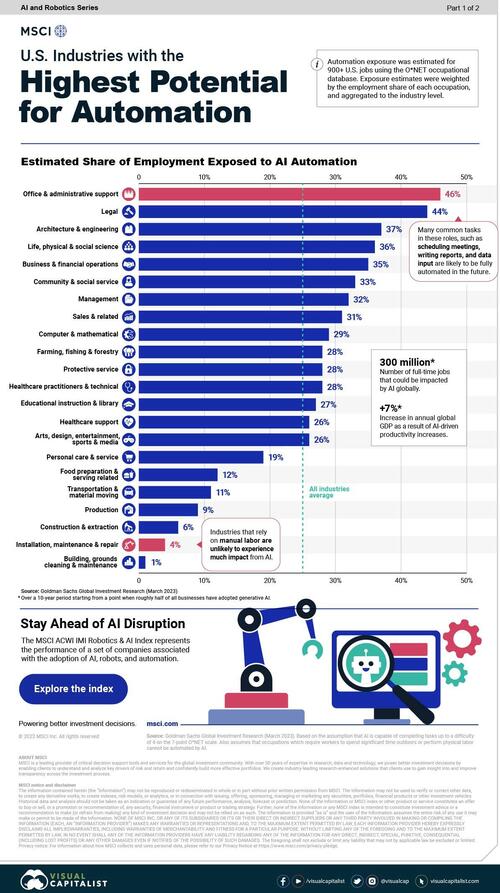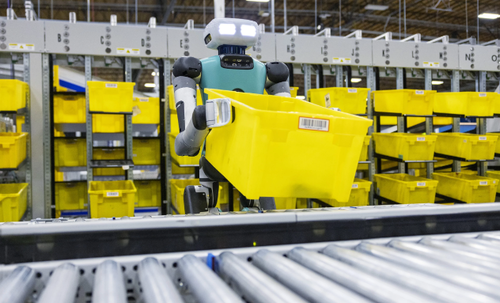
Amazon has introduced two new robots to speed up deliveries, raising concerns among fulfillment center workers that the e-commerce giant might eventually reduce its workforce.
In a blog post on Wednesday, Amazon said its robotics team will begin testing a bipedal robot named "Digit" at a site just south of Seattle.
"Digit can move, grasp, and handle items in spaces and corners of warehouses in novel ways. Its size and shape are well suited for buildings that are designed for humans, and we believe that there is a big opportunity to scale a mobile manipulator solution, such as Digit, which can work collaboratively with employees," Amazon said.
Amazon explained Digit will "help employees with tote recycling, a highly repetitive process of picking up and moving empty totes once inventory has been completely picked out of them."
In addition to Digit, Amazon revealed Sequoia, a new robotic system to help fulfill customer orders faster, already operational at a Texas fulfillment center.
"Sequoia will help us delight customers with greater speed and increased accuracy for delivery estimates, while also improving employee safety at our facilities," Amazon said, adding it will "identify and store inventory we receive at our fulfillment centers up to 75% faster than we can today."
It also "reduces the time it takes to process an order through a fulfillment center by up to 25%, which improves our shipping predictability and increases the number of goods we can offer for Same-Day or Next-Day shipping," the e-commerce giant added.
Amazon said it has more than "750,000 robots working collaboratively with our employees, taking on highly repetitive tasks and freeing employees up to better deliver for our customers."
At some point, Amazon will realize its robot workforce can do a better job fulfilling orders than humans because robots don't get sick, take breaks, complain, strike, or waste time watching TikTok videos on their smartphones.
We've penned plenty of notes over the years, informing readers about the coming massive layoff wave corporations will have to unleash due to AI. Godman's Jan Hatzius suggested in a note earlier this year, "Using data on occupational tasks in both the US and Europe, we find that roughly two-thirds of current jobs are exposed to some degree of AI automation, and that generative AI could substitute up to one-fourth of current work. Extrapolating our estimates globally suggests that generative AI could expose the equivalent of 300 million full-time jobs to automation" as up to "two thirds of occupations could be partially automated by AI."
... and more recently, younger folk in the labor market are beginning to realize their days are numbered as AI takes their jobs.
For more insight into the rapidly evolving job landscape, Visual Capitalist's Marcus Lu and Sabrina Lam - using data from MSCI - have ranked the industries where AI-driven automation will displace the most workers.
Now's the time to evaluate your job and see how automation will impact your industry.
Amazon has introduced two new robots to speed up deliveries, raising concerns among fulfillment center workers that the e-commerce giant might eventually reduce its workforce.
In a blog post on Wednesday, Amazon said its robotics team will begin testing a bipedal robot named “Digit” at a site just south of Seattle.
“Digit can move, grasp, and handle items in spaces and corners of warehouses in novel ways. Its size and shape are well suited for buildings that are designed for humans, and we believe that there is a big opportunity to scale a mobile manipulator solution, such as Digit, which can work collaboratively with employees,” Amazon said.
Amazon explained Digit will “help employees with tote recycling, a highly repetitive process of picking up and moving empty totes once inventory has been completely picked out of them.”
In addition to Digit, Amazon revealed Sequoia, a new robotic system to help fulfill customer orders faster, already operational at a Texas fulfillment center.
“Sequoia will help us delight customers with greater speed and increased accuracy for delivery estimates, while also improving employee safety at our facilities,” Amazon said, adding it will “identify and store inventory we receive at our fulfillment centers up to 75% faster than we can today.”
It also “reduces the time it takes to process an order through a fulfillment center by up to 25%, which improves our shipping predictability and increases the number of goods we can offer for Same-Day or Next-Day shipping,” the e-commerce giant added.
Amazon said it has more than “750,000 robots working collaboratively with our employees, taking on highly repetitive tasks and freeing employees up to better deliver for our customers.”
At some point, Amazon will realize its robot workforce can do a better job fulfilling orders than humans because robots don’t get sick, take breaks, complain, strike, or waste time watching TikTok videos on their smartphones.
We’ve penned plenty of notes over the years, informing readers about the coming massive layoff wave corporations will have to unleash due to AI. Godman’s Jan Hatzius suggested in a note earlier this year, “Using data on occupational tasks in both the US and Europe, we find that roughly two-thirds of current jobs are exposed to some degree of AI automation, and that generative AI could substitute up to one-fourth of current work. Extrapolating our estimates globally suggests that generative AI could expose the equivalent of 300 million full-time jobs to automation” as up to “two thirds of occupations could be partially automated by AI.”
… and more recently, younger folk in the labor market are beginning to realize their days are numbered as AI takes their jobs.
For more insight into the rapidly evolving job landscape, Visual Capitalist’s Marcus Lu and Sabrina Lam – using data from MSCI – have ranked the industries where AI-driven automation will displace the most workers.
Now’s the time to evaluate your job and see how automation will impact your industry.
Loading…
